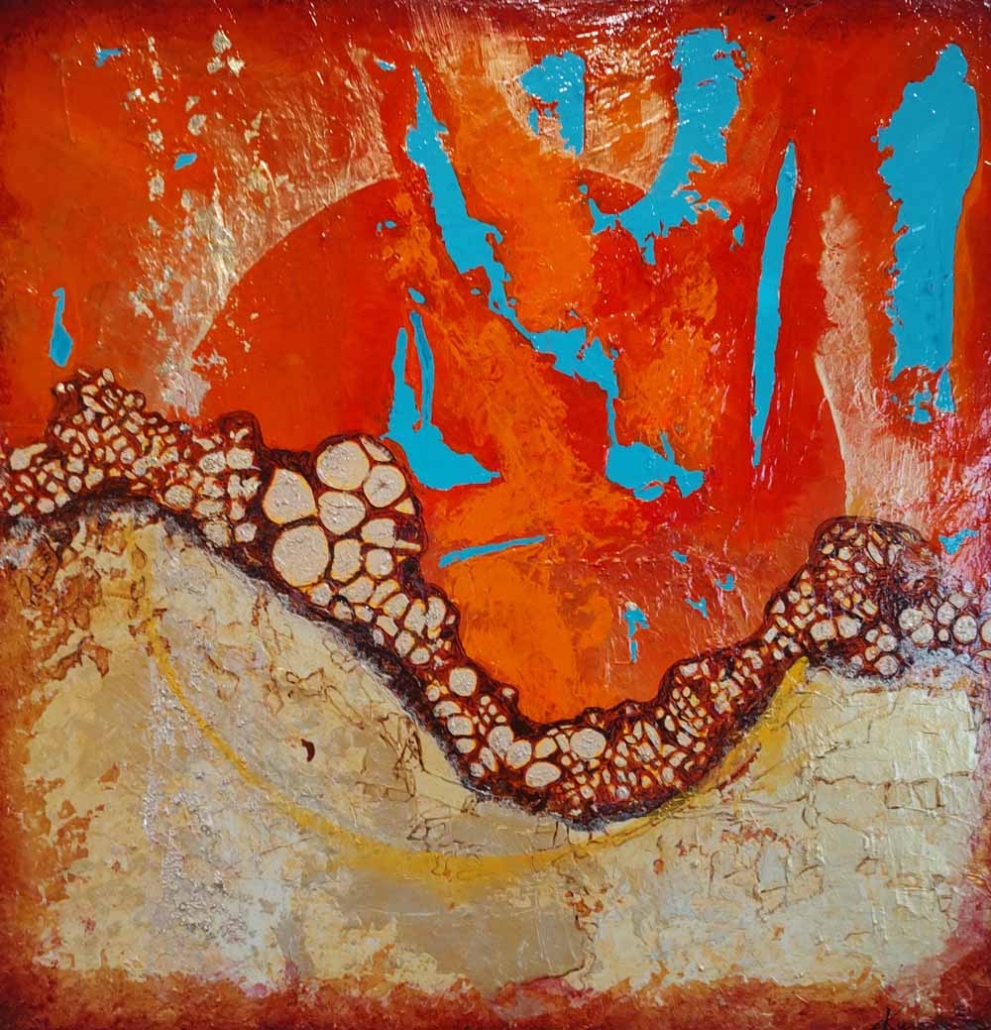Noelle Kalom

Noelle Kalom characterizes the imagery she creates as an abstract landscape. Although this collocation sounds rather oxymoronic, it points to the inherent and unavoidable connection between our experience and imagination, preserved even in the non-figurative pieces.
The first name one can think of when hearing about abstract landscape is Nicolas de Staël, a celebrated French artist of the first half of the 20th century who worked on the verge of abstraction and representation. Working within the tradition of tachism (from the French tache, stain), a French movement of abstract art, de Staël constructed his compositions in pastose, thickly applied paint blocks. Like de Staël, Noelle favours working with lavish, expressive, painterly surfaces. She begins working on an image with a heavy, dense layer of medium gel on the canvas using a palette knife, which results in a spontaneous, intuitively modelled background composition. This groundwork sets the stage for further exploration as Noelle incorporates a second layer of contrasting acrylic colours. She introduces mixed media elements such as glass beads and pumice to enhance the evolving textured surface. This helps the artist reveal and emphasize the symbols and lines that could trigger the chain of associations.
Unlike the paintings by de Staël, which still hinted at particular objects and scenes, Noelle’s paintings are way more detached from the visible reality. Yet, they still convey the actual background of the artist. Noelle’s creative vision was shaped by her contacts with the traditions, beliefs, and rituals of the Taos Pueblo, located north of Taos, New Mexico. That is why her pieces refer to the metaphysical categories in the titles (Encounter, Crossing, Ceremony, The Bridge). Thus, an abstract landscape can be interpreted more as a spiritual, personal landscape representing specific geographical locations.
The painter seeks her inspiration in the plain and elementary actions of layering and identifying forms in an accidental combination of lines and spots. Pareidolia is a specific term that describes humans’ ability to discern a distinct and frequently meaningful image within a chaotic or nebulous visual arrangement. Pareidolia is one of the most basic physiological foundations of human creativity. Noelle explores it as part of her toolset. Employing active and clashing colour combinations (like red and ochre instead of blue and turquoise) helps her recreate the primordial, ritualistic perception of art.
Noelle Kalom is an artist born in Taos, New Mexico. Since early childhood, she has been surrounded by a community of artists. In 1989, she received the Grants- Franklin Furnace Award for performance art. Noelle is a participant in several residencies, like Burren College of Art in Ireland (2021), Pada Residency in Lisbon (2024), Portugal, and Lakkos Residency in Crete, Greece (2024). She has lived, worked, and exhibited in New York City, the Pacific Northwest, and Portugal. Magpie Gallery in Taos, New Mexico, currently represents her.
Noelle Kalom is the Bronze Artist of the ArtAscent Abstract call for artists. To see the full body of work and profile, get a copy of the ArtAscent Art & Literature Journal Abstract issue.




